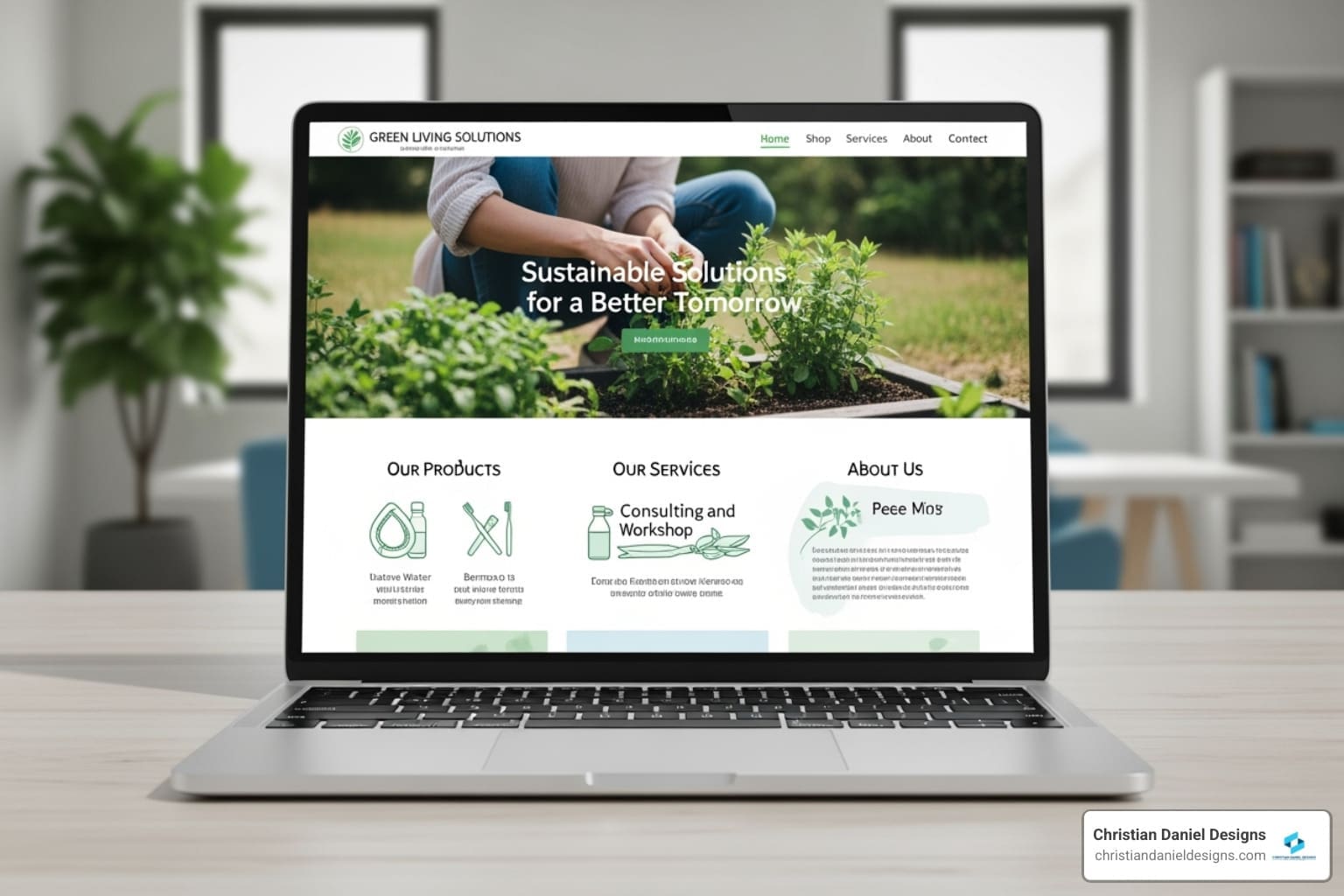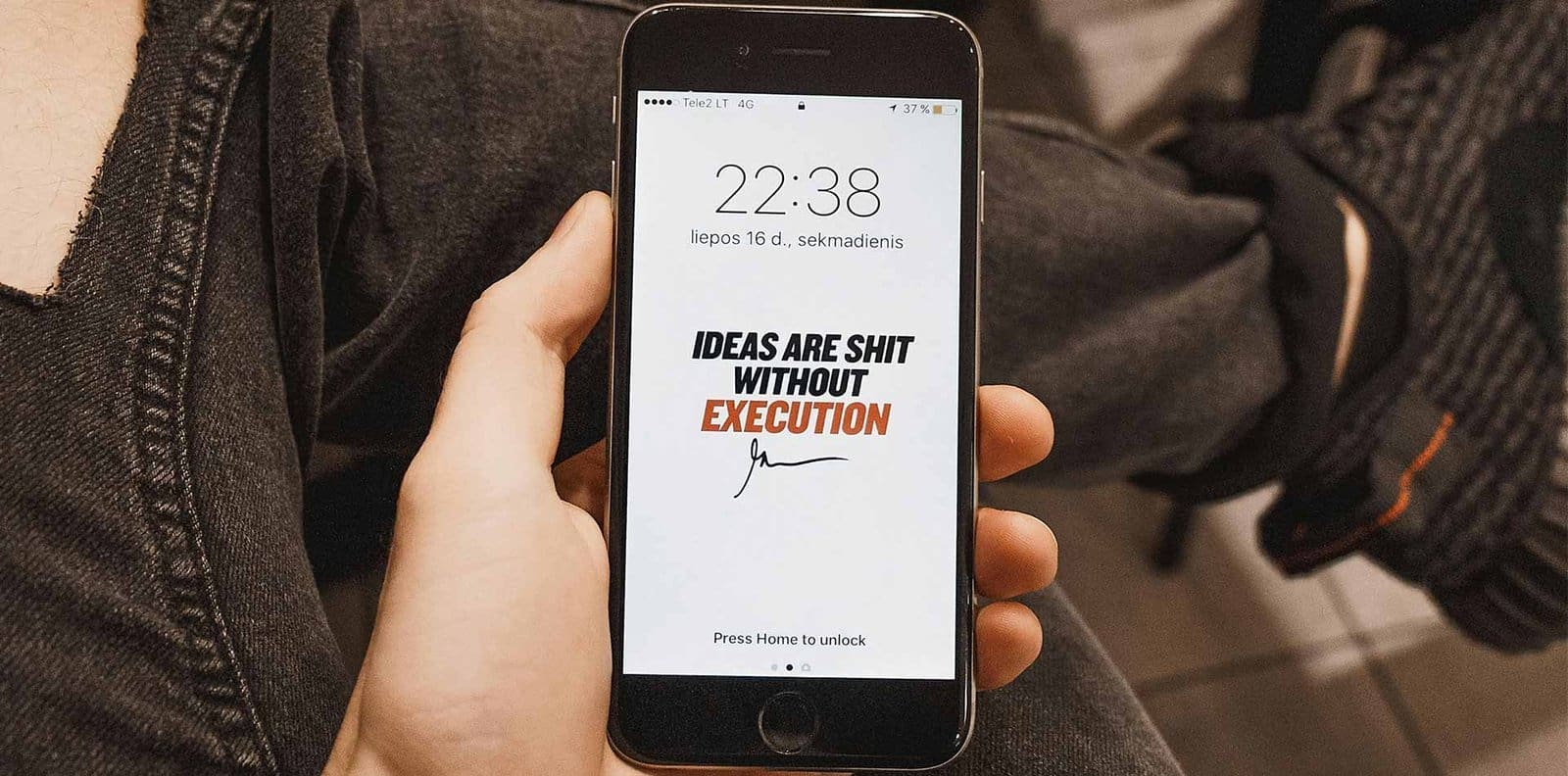Hotel booking website design: Irresistible 2025
Why Your Hotel Website is Your Most Valuable Sales Asset
I believe hotel booking website design is about creating a site that turns browsers into guests, drives direct bookings, and cuts your reliance on costly third-party platforms.
In my experience, effective hotel booking website design includes these essential elements:
- High-quality visuals – Professional photography and video showcasing your property’s unique atmosphere.
- Mobile-first responsiveness – A seamless experience on any device (desktop, tablet, phone).
- Clear calls-to-action – Prominent “Book Now” buttons and booking widgets.
- Integrated booking engine – A direct path from interest to reservation.
- Fast load speeds – Optimized performance to keep visitors engaged.
- Trust indicators – Reviews, testimonials, and other social proof.
- SEO optimization – Visibility in search results for potential guests.
- Accessibility compliance – WCAG 2.0 ADA standards for inclusive design.
Here’s a sobering reality: up to 75% of hotel guests prefer booking through online travel agencies (OTAs) instead of directly on hotel websites. Those OTAs charge commission rates that can reach as high as 30% of your booking revenue. For every $1,000 reservation, you could be losing $300 to a middleman.
The good news is that even small changes to your hotel website can lead to a double-digit revenue increase. Your website isn’t just a digital brochure; it’s your 24/7 front desk and most persuasive salesperson. However, a poorly designed site actively pushes visitors toward those expensive OTAs. A confusing booking process, slow load times, or a clunky mobile experience means you’re essentially paying competitors to steal your customers.
This guide will show you how to create a hotel booking website that captures attention, builds trust, and drives direct bookings. I’m Christian Daniel, founder of Christian Daniel Designs, and for over two decades, I’ve crafted hotel booking website design solutions for properties like The Plaza Hotel and Park Hyatt Chicago. You’ll learn the design elements and strategies to build a site that works as hard as you do.

Important Hotel booking website design terms:
The Foundation: Essential Elements of a High-Converting Hotel Website
When I design a hotel booking website, I’m not just making something pretty; I’m building a digital experience that turns browsers into guests. I’ve seen how a great hotel web design with a seamless e-commerce experience can dramatically improve your profit margin. My measure of success is how effectively your website converts.
Every successful hotel website I’ve built rests on several non-negotiable elements: High-quality visuals, mobile-first responsiveness, intuitive navigation, clear Calls-to-Action, an integrated booking engine, and social proof. For a deeper exploration of these, check out my Best Hotel Websites Ultimate Guide 2025.
Visual Storytelling: More Than Just Pretty Pictures
In my experience in hospitality, a picture is worth a thousand dollars in direct bookings. I prioritize professional photography and video that evokes an experience, not just shows a room. One&Only Cape Town’s site, for example, uses simple, striking design to convey luxury and present an aspirational destination.
Hero videos are another powerful tool I use to immerse visitors in your property’s atmosphere. Samsara Ubud reflects its high-end Bali retreat with captivating video and an interactive cursor. You can see how Samsara Ubud uses stunning video to create this effect.
The catch? A great video can’t kill your page speed. I always balance captivating visuals with performance. Virtual tours also build transparency and excitement. For me, the key is brand consistency: every visual should tell a cohesive story, creating the kind of Immersive Website Experiences that resonate.
The Booking Funnel: From Browser to Guest
The booking engine is where conversion happens. My hotel booking website design philosophy is to make this process frictionless. I ensure seamless booking engine integration so it’s an organic part of the site, not a clunky afterthought.
I find that simple forms, transparent pricing, and clear date presentation are crucial. Hidden fees or a confusing path will scare away guests. The mobile user experience is vital; if booking on a phone is difficult, they’ll jump to an OTA. I always design mobile-first to ensure the process is quick and easy on small screens.
My goal is a high “look-to-book” ratio, where visitors who check availability proceed to book. This is where an efficient Online Reservation System shines.

Building Trust and Urgency
Travelers rely on others’ experiences, so integrating customer reviews and testimonials is a powerful way to build trust. I make these elements prominent but not overwhelming. The site for 18 Micon Street in Athens does this well, mixing reviews with property images to build credibility.
Award badges or certifications are also strong credibility signals. Furthermore, subtle and genuine scarcity messaging like “Only 2 rooms left!” can create urgency. I caution against fake urgency, as it can backfire. I’ve learned that authenticity is key.
These trust-building elements are fundamental Characteristics of a Good Hospitality Website Design that I incorporate into every project.
Driving Direct Bookings: Your Strategy Against the OTA Giants
After decades in hospitality design, I’ve learned a hard truth: OTAs are both a blessing and a curse. They offer visibility but quietly drain your profits. Those commissions I mentioned—up to 30%—add up to thousands of dollars monthly for most properties. That’s money that should be staying in your pocket.
When I work with hotel clients, my primary goal with hotel booking website design is to help you reclaim those bookings. While OTAs have their place, they shouldn’t be your only strategy. A well-designed, conversion-focused website shifts the balance back to you. This is the heart of Conversion-Focused Web Design, and it’s what I specialize in.
Why Direct Bookings Are a Hotel’s Best Friend
Let me explain why direct bookings matter so much. First, you bypass those hefty commission fees, keeping 100% of the revenue. For any property, this profit difference can be the margin between struggling and thriving.
Second, when someone books directly, you own that guest relationship from day one. You get their email, preferences, and history—the foundation for building loyalty. Hoteliers consistently tell me their most valuable customers are repeat guests who book direct.
Third, direct bookings let you gather valuable guest data that belongs to you. With OTAs, that data is locked in their system, so you’re building their customer database, not yours. Owning the data allows for personalized marketing and custom offerings.
Finally, direct bookings create natural upselling opportunities. On your site, you can offer a spa package, a room upgrade, or a welcome basket to boost your average booking value. These advantages are core to effective Hospitality Branding Solutions that strengthen your market position.
Design Tactics to Win the Booking
So how do I design a website that pulls guests from OTAs to your booking engine? It’s not about tricks; my approach is about making the direct path genuinely more appealing.
I always start with a Best Rate Guarantee banner that’s impossible to miss. It should be on your homepage and booking pages—wherever a guest might compare prices. The message is clear: you won’t find it cheaper anywhere else.
Next, I design compelling visuals around your exclusive direct-booking perks, like complimentary breakfast or late checkout. I highlight these perks with attractive graphics and clear messaging, answering the question: “Why should I book here instead of on Booking.com?”
If you have a loyalty program, it needs to be front and center in your hotel booking website design. I create sections that explain the long-term value of booking directly, shifting the focus from a single transaction to an ongoing relationship.
Finally, I use exit-intent pop-ups strategically. When someone is about to leave your site, a pop-up can offer a final incentive for booking direct, like a 10% discount. When used thoughtfully, these can capture bookings that would otherwise go to an OTA.

Advanced Hotel Booking Website Design: Trends, Tech, and Tailoring
In my work, I see that the world of web design never stands still, and hotel booking website design is constantly evolving. To stay competitive and capture the attention of modern travelers, your website needs to feel current, perform flawlessly, and speak directly to your ideal guest. I’ve spent over two decades watching these trends shift, and I can tell you that the hotels that adapt are the ones that thrive. My Ultimate Hospitality Web Design Guide dives deep into these topics if you want to explore further.
Staying Ahead: 2025 Hotel Website Design Trends
When I’m designing a hotel website in 2025, I’m thinking about what makes a site feel fresh without being gimmicky. Right now, I’m seeing a beautiful return to minimalism and white space. This isn’t about being boring; it’s about letting your stunning property photos breathe. When you give your visuals room to shine, they make a much stronger emotional impact. Vesper Hotel does this brilliantly with simple copy, warm colors, and trendy fonts that let their aspirational vacation pictures do the talking. You can see a minimalist design at Vesper Hotel to understand what I mean.
Bold typography is another trend I’m loving. It adds personality and creates clear visual hierarchy without cluttering the design. Immersive video headers continue to be one of my favorite tools because they instantly transport visitors to your destination. Song Saa Resort and Little Palm Island both use this technique masterfully. When someone lands on your site and immediately sees your property in motion, it creates an emotional connection that static images simply can’t match.
I’m also incorporating more micro-interactions into my designs. These are those subtle animations and visual feedback moments when you hover over a button or scroll down a page. They might seem small, but they make your site feel alive and responsive. Finally, personalized content is becoming increasingly sophisticated. Imagine a website that remembers a returning visitor’s preferences or adapts based on their browsing behavior. It’s like having a concierge who remembers your name.
Optimizing for Visibility: SEO in Hotel Booking Website Design
Let me share a truth that might sting: the most beautiful website in the world is worthless if no one can find it. That’s why I weave SEO into every hotel booking website design from the ground up, not as an afterthought.
For hotels, local SEO is absolutely critical. When someone searches for “hotels near me” or “boutique hotel in Manhattan,” you need to show up. I focus heavily on local keywords, optimizing your Google My Business profile, and building local citations that tell search engines exactly where you are and what you offer.
Beyond local visibility, I implement Schema markup specifically for “Hotel” and “Room” types. This helps search engines understand your content better, which can lead to those rich search results with star ratings and pricing right in the Google listing. Trust me, those improved listings get more clicks.
For me, page speed optimization is another non-negotiable. A slow-loading site frustrates users and gets penalized by search engines. I carefully optimize every image, streamline code, and fine-tune server responses to make sure your site loads lightning-fast. Every second counts.
I also develop a strong content strategy that includes local guides, blog posts about nearby attractions, and detailed descriptions of your amenities. This content establishes your website as an authority and draws in organic traffic. Did you know Google often prefers WordPress for its SEO capabilities? That’s one reason I often build on platforms with robust SEO frameworks, as I detail in my Web Design Small Business Guide.
Designing for Everyone: Accessibility (WCAG & ADA)
I believe accessibility isn’t just about checking a compliance box. It’s about making sure every potential guest can experience your property online, regardless of their abilities. When I design a hotel booking website design, I build it to be inclusive from day one.
This means adhering to WCAG 2.0 ADA standards. These guidelines ensure that people with disabilities can perceive, understand, steer, and interact with your website. I pay close attention to keyboard navigation, making sure every interactive element can be accessed without a mouse. Alt text for images is essential for screen readers, providing descriptions for visually impaired users. Color contrast matters too, ensuring text remains legible against background colors for those with visual impairments.
Neglecting accessibility doesn’t just create a poor user experience for a significant portion of your audience; it can also expose you to legal issues. Understanding the technical requirements of WCAG 2.0 ADA standards is complex, but honestly, that’s what you hire me for.
One Size Doesn’t Fit All: Tailoring Your Hotel Booking Website Design
I’ll be blunt: a luxury resort and a retro motel shouldn’t have the same website. Every property has a unique story, and your hotel booking website design should reflect that story authentically. When I meet with a new client, one of my first questions is always, “Who is your ideal guest, and what experience are you promising them?”
For luxury properties, I focus on elegance and exclusivity. For boutique hotels, I celebrate personality and local charm. For motels, I blend a retro vibe with modern convenience.
| Property Type | Design Focus | Examples & Insights |
|---|---|---|
| Luxury | Elegance, Exclusivity, Impeccable Service | Sites like One&Only Cape Town use sophisticated visuals and hero videos to convey opulence. The digital experience must match the five-star service. |
| Boutique | Unique Story, Personality, Local Charm | Donkey Bay Inn uses a minimal menu to offset bright, tropical colors. These sites accept bold design, unique imagery, and copy that highlights character. |
| Motel | Retro Vibe, Convenience, Value, Updated Amenities | Modern motels like Amigo Motor Lodge co-opt vintage aesthetics with a glossy finish, conveying a unique lodging experience and highlighting updated amenities. |
My job is to ensure your website resonates with your target demographic, making your promise clear from the homepage.
Building Your Website: DIY vs. Templates vs. Custom Design
When it comes to actually getting your hotel booking website design built, you have several paths you can take. Each approach has its own unique advantages and drawbacks, and honestly, the best choice really depends on your budget, how comfortable you are with technology, and what you’re hoping to achieve. As a specialist in Custom Hotel Websites, I’ve worked with clients who’ve tried all these different routes before finding what works best.
Choosing Your Path: Pros and Cons
Here are the three main approaches I see hoteliers consider:
DIY platforms (Wix, Squarespace, basic WordPress) are cost-effective and offer direct control. However, templates restrict unique branding, and these platforms often struggle with scalability and advanced SEO. Free websites from property management systems are even worse—templated, inflexible, and terrible for SEO. You’re also largely on your own for technical support.
Integrated solutions (SiteMinder, Cloudbeds) are designed for hospitality and connect seamlessly with your other systems. You get dedicated support, but you’re locked into their ecosystem. Design options are still template-based with limited flexibility, and deep SEO customization is often impossible.
Custom design with an agency or freelancer offers the most powerful solution. A custom build provides a unique design that captures your brand and maximizes conversions. I design these sites for seamless integration with any system and best-in-class SEO. The site scales effortlessly, and you get a dedicated partner. The trade-off is a higher upfront investment and a longer timeline.
After twenty years in this business, I believe a custom solution delivers the best ROI for hotels serious about direct bookings. The higher upfront cost is outweighed by long-term gains in conversions, brand control, and reduced OTA fees.
Common Mistakes to Avoid in Your Hotel Website Design
Most website failures I see in hotel booking website design stem from these common, avoidable pitfalls:
- Poor quality visuals: Blurry photos or slow videos communicate “cheap” and drive guests away.
- Complicated booking: A confusing or broken booking process sends guests straight to OTAs.
- Not mobile-responsive: A clunky mobile site is a direct route to Booking.com.
- Slow load times: Slow speeds frustrate users and hurt search rankings.
- Hidden CTAs: Your “Book Now” button must be prominent and clear.
- Ignoring brand story: Your site should reflect your unique personality, like how Austin Motel sells an experience, not just a room.
- No accessibility: This alienates guests and risks legal issues. Always design to WCAG 2.0 ADA standards.
- Outdated content: All information must be current. Inaccurate details erode trust.
From my perspective, avoiding these mistakes is as crucial as implementing best practices.

Conclusion: Your Digital Front Desk Awaits
In this guide, I’ve walked you through everything from the foundations of effective hotel booking website design to advanced strategies for reclaiming direct bookings. The key takeaway for me is this: your hotel website isn’t a passive brochure. It’s your hardest-working salesperson, operating 24/7 to turn browsers into booked guests.
Think about the numbers I shared: OTA commissions up to 30% and the revenue boosts from small website improvements. This is real money that either stays in your pocket or goes to a third party. I’ve seen how a great hotel web design with a seamless e-commerce experience can dramatically improve your profit margins and give you direct relationships with your guests.
By prioritizing great visuals, intuitive navigation, a frictionless booking funnel, social proof, and direct-booking incentives, you’re not just building a website. You’re creating a revenue-generating asset.
I’ve spent over two decades crafting hotel booking website design solutions for properties like The Plaza Hotel and Park Hyatt Chicago. I’ve learned that every hotel has a unique story, and your website should be its stage. Whether you’re a luxury resort, a boutique hotel, or a retro motel, your digital front desk must reflect who you are and why guests should book direct.
Don’t let a poorly designed website push guests toward expensive OTAs. Let it be the welcoming, efficient, and irresistible digital front desk your property deserves. As a specialist in hospitality web design, I’m passionate about helping hotels transform their online presence into a strategic advantage.
If you’re ready to create a website that captures attention, builds trust, and drives direct bookings, I’d love to help. I’m ready to work with you to craft a site that doesn’t just look stunning but delivers measurable results for your business.
Start building a high-converting hotel website with my expert guidance.











